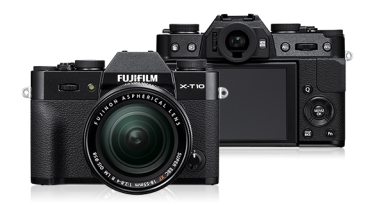 When the X-T10 camera was launched in late 2015 it was dubbed by many as a ‘cut down X-T1’, stripped of many of its features. Having bought one a few weeks ago, that seems to be far from the truth! Sure it is smaller, it doesn’t claim to have the weather proofing that its big brother has, and both the LCD and viewfinder screens are a little smaller, but it really is an exceptionally good camera, at around half the price of the X-T1!
When the X-T10 camera was launched in late 2015 it was dubbed by many as a ‘cut down X-T1’, stripped of many of its features. Having bought one a few weeks ago, that seems to be far from the truth! Sure it is smaller, it doesn’t claim to have the weather proofing that its big brother has, and both the LCD and viewfinder screens are a little smaller, but it really is an exceptionally good camera, at around half the price of the X-T1!
The autofocus is very good indeed, better than the X-T1 at the time the X-T10 was launched, although the X-T1 autofocus has now been brought up to the same level. The sensor and processing is virtually the same as the X-T1 and other current Fuji cameras so  no issues there – the image quality is identical. There are the full range of image quality and shooting controls, a tilt LCD screen, face detection and continuous AF, and even a built-in flashgun. Apparently the time to store a burst of photos is slower, but as I see it that is really only an issue if shooting sport or similar.
no issues there – the image quality is identical. There are the full range of image quality and shooting controls, a tilt LCD screen, face detection and continuous AF, and even a built-in flashgun. Apparently the time to store a burst of photos is slower, but as I see it that is really only an issue if shooting sport or similar.
What I really love is just how tiny the camera is – put one of the smaller Fuji lens on it, like the new 35mm f2 or the diminutive 27mm, and the camera is little bigger than a compact – yet offers full ‘DSLR’ type performance and image quality. It’s now my ‘everyday’ camera, and will definitely be my first choice for street photography as it is so inconspicuous. Nice one Fuji..
Here’s one of my first ‘serious’ photos taken with the camera. I’ll be adding more images in due course.

Fuji X-T10 with 10-24mm lens

 I suppose it’s easy to assume that photography only really got going with the advent of ‘digital’ – the easy availability of photos taken on smartphones and tablets, and relatively cheap and easy-to-use point and shoot cameras has revolutionised photography for the ‘man-in-the-street’. What you see is very much what you get, and cloud photo-sharing sites make sharing photos so easy.
I suppose it’s easy to assume that photography only really got going with the advent of ‘digital’ – the easy availability of photos taken on smartphones and tablets, and relatively cheap and easy-to-use point and shoot cameras has revolutionised photography for the ‘man-in-the-street’. What you see is very much what you get, and cloud photo-sharing sites make sharing photos so easy. Box Brownie and folding cameras taking roll film, together with the advent of consumer oriented processing labs really reduced the cost of photography, and the widespread adoption of 35mm film (originally developed for the movie industry) and cheap Far-East produced cameras really opened up the opportunities for everyone to take their own photos.
Box Brownie and folding cameras taking roll film, together with the advent of consumer oriented processing labs really reduced the cost of photography, and the widespread adoption of 35mm film (originally developed for the movie industry) and cheap Far-East produced cameras really opened up the opportunities for everyone to take their own photos.